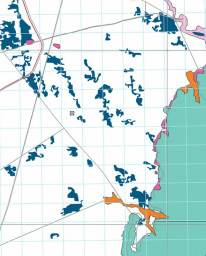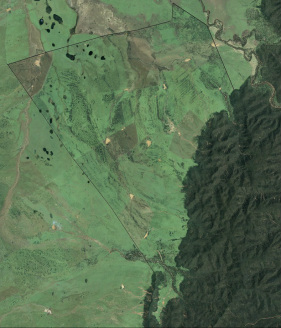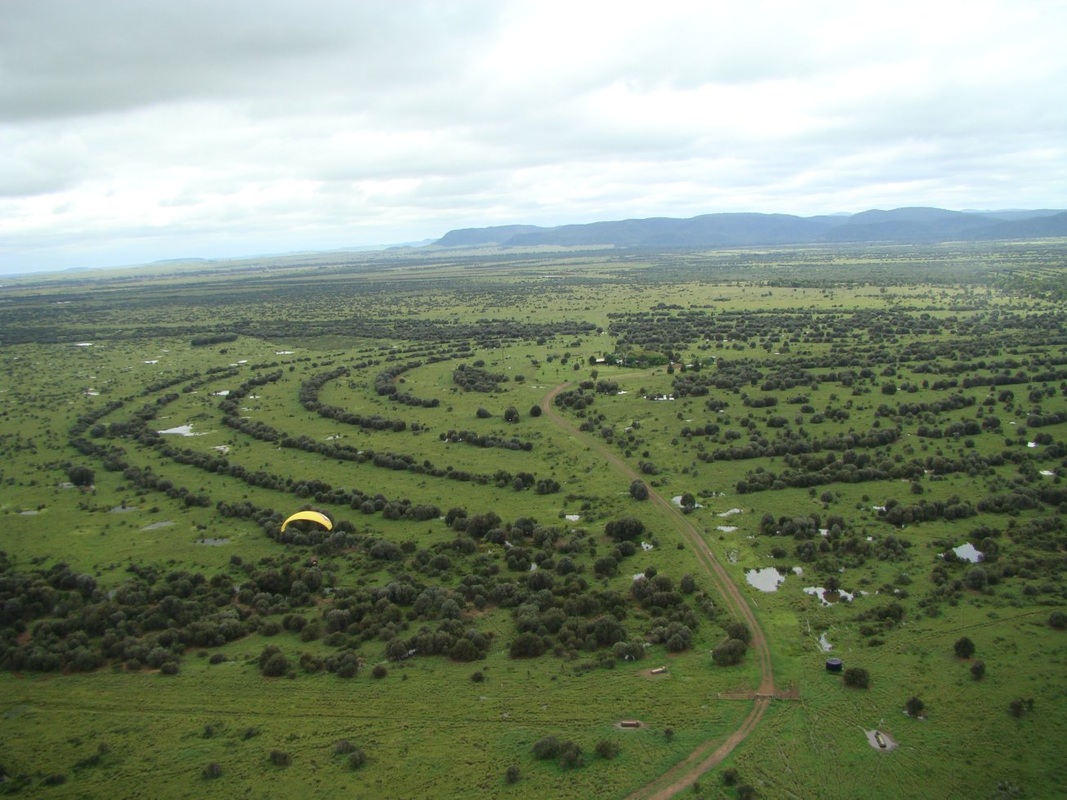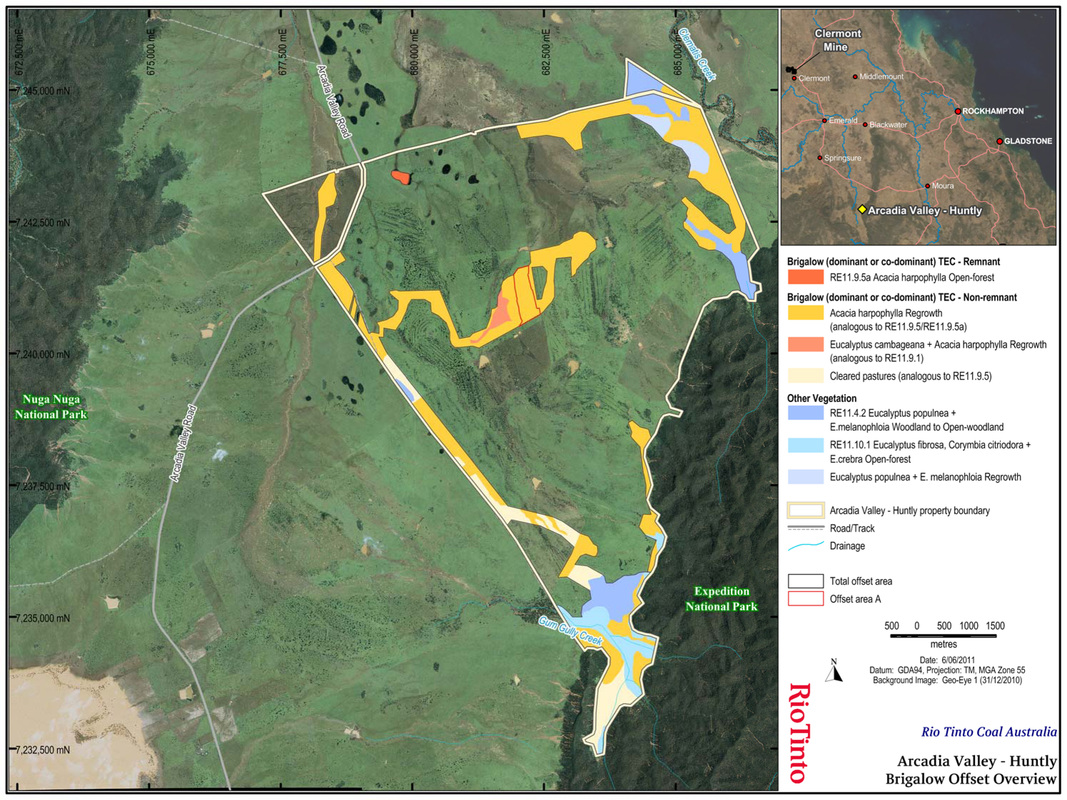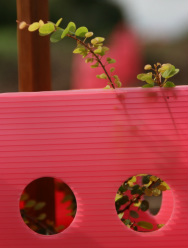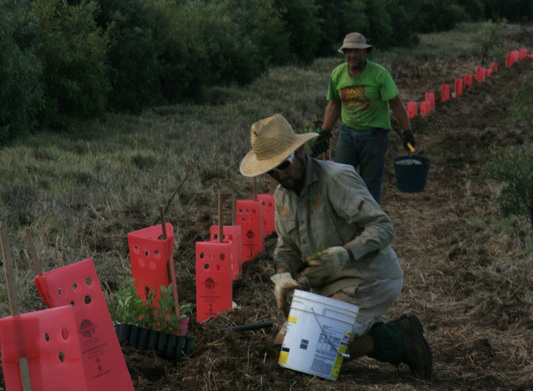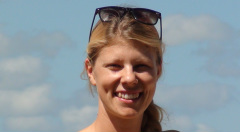THE VEGETATION OFFSETS
The political history
In the late nineties, the Qld Government set about to change the Vegetation Management Acts. I guess they were looking for all the carbon credits they could boast on the global playing field.
A moratorium on all land clearing allowed the brave to clear what they could quickly and pay the penalty (cheap in comparison with what they gained). The slower landholders ignorantly capitulated to a new regime of vegetation management by the Governments.
In the late nineties, the Qld Government set about to change the Vegetation Management Acts. I guess they were looking for all the carbon credits they could boast on the global playing field.
A moratorium on all land clearing allowed the brave to clear what they could quickly and pay the penalty (cheap in comparison with what they gained). The slower landholders ignorantly capitulated to a new regime of vegetation management by the Governments.
|
We were given maps of our properties with colour on them. Pink for remnant or endangered species - not to be touched, green for "High valued regrowth" - also not to be touched. Then there was the white area. Landholders could lock that in and be free to do with it what they care.
Some land holders were slow to act and a few years later the Qld Government put a moratorium on all regrowth. For the slow and the impoverished this meant more of their land was taken to Trees. |
Agforce, our political representative body, ran PMAV workshops , helping landholders to understand the process so they could lock in their white areas. After the regrowth moratorium, the slow old landholders rushed the PMAV workshops and locked in what white was left!
|
Huntly
I have been leaving corridors of Trees and strips of brigalow at Huntly since doing a permaculture course with Bill Mollison in the late 1980s. |
I attended a PMAV workshops with my coloured pencils and asked if I could add more colour to my Regional Eco Map. I wanted to secure the Trees. They looked at me like I was mad. No landholder in their right mind, wanted more colour on their map. Too many times I had seen careful planned shade lines and reveged properties get flattened when they were sold. I wanted to protect my Trees.
|
The Offsets
It was several years later that Greening Australia found me the opportunity to offset Rio Tinto's expanding Clermont Coal Mine. They were looking for a brigalow forest . . . and I had plenty of it. A match mad in heaven! and they paid me handsomely. It opened up a new era for me in the business of Trees.
It was several years later that Greening Australia found me the opportunity to offset Rio Tinto's expanding Clermont Coal Mine. They were looking for a brigalow forest . . . and I had plenty of it. A match mad in heaven! and they paid me handsomely. It opened up a new era for me in the business of Trees.
It took 18 months of negotiations and mapping before the project happened. There were conditions set by the State Government and others set by the Federal Government. The State wanted a small area to be completely revegetated from grasslands. There were other patches within the Federal Governments area that warranted 'enhance planting'. They were not huge areas, almost token plantings.
|
Bood, my brother became involved in the Tree planting and we employed Matt Kilby to teach us how to plant Trees properly. Giving them every chance of survival in our erratic climate is critical. Matt is amazing, we learnt so much and we all became more passionate about Trees.
The Nursery I acquired a propagators license and began collecting and germinating seeds. Every inch of the way has been a fascinating learning curve and the little nursery is proving quite profitable. I have recently got a contract from GLNG for seedlings of local species required to offset the recent pipeline to Gladstone. |
Ernesto Sirrolli once said, "when something becomes scarce in becomes valuable." Brigalow and Bluegrass are the most sought after species for Offsets in Queensland!
|
The grass is always greener under a …. Tree
by Lisa Verbon MSc. Netherlands
How do you get grass greener than your neighbor’s? This article will give you insight in the three grow factors of grass: water, nutrients and sunlight. Compose and play with the different elements to get the greenest pasture of Rolleston!
Water
The first need of all life, and thus also grass, is water. Most places in Rolleston the groundwater table is very deep, so the grass is dependent on rainfall. So how can create the conditions for the optimal absorption of this rainwater for the grass?
We all have seen how cold water sizzles and skitters rapidly sideways when it falls on a hot-plate. A hot, dry ground surface, produces the same effect, making it impossible for the rainwater to infiltrate. As a result, bare pastures are flooded and soon filled with water vapor. The amount of water that does infiltrate, dissolves minerals from the soil. Due to geothermal pressure, the mineral-rich water rises up. As the soil is exposed to the sun, the water evaporates, leaving the minerals close to the surface, resulting in salinization.
It is remarkable that a tree can influence its soil temperature significantly. It lowers the temperature during the day, which enhances infiltration. In the morning, when the sun starts heating up the soil, the carbon acid in the roots of the tree is transformed into CO2. The CO2 bubbles rise up though the capillaries of the tree, pushing nutrient-rich sap to the crown of the tree. During this process, the temperature of the soil drops. In the evening, when the air temperature drops, the CO2 condenses and the sap cools off. It sinks down to the roots of the tree and warms up the soil during the night. In this way, trees reduce fluctuations in soil temperature. In turn, this enhances the amount of microorganisms. These organisms, together with the roots, improve the soil quality by creating a fine-grained network. This network enables water to infiltrate into deeper layers of the soil. Below ground, the cool and mineral-rich water is stored until it is used in periods of drought.
Extra water storage
Harmful pathogenic bacteria tend to populate the upper, warmer and more highly oxygenated strata of a water body. Therefore, drinking water should be stored at the coolest possible temperature. Water plants and their microorganisms assist in dealing with pathogens. In order to cool down and clean the water stored from a dam, it can be filtered below ground using clean quartz sand. The water percolates from the dam, through the underground sand layer into a well, from where it can be pumped into a tank.
Nutrients
Trees have different root systems than grasses. Their roots reach, unlike grasses, into the deeper layers of the soil. Here, higher quality elements are absorbed and moved upwards. Each tree species has its own remarkable root architecture. By planting various tree species, the diverse root systems extract minerals from various depths, while making them available to other plants. In this way, the nutritive content of the grass is enhanced. Furthermore, the leaves of the trees can be eaten by cattle, or used as mulch to fertilize the pasture.
Sunlight
Trees will cast shadow on the grass, leading to less sun-loving grasses in that spot. However, many grasses prefer the shade. So with introducing shade-loving grasses underneath the trees, there does not have to be a decrease in pasture area. The diversity in grasses has a positive effect on the cattle.
Further reading
Trees - Living Energies, Victor Schauberger’s Brilliant Work with Natural Energy Explained by Callum Coats, Gill & MacMillan, 2001.
Shade tolerant grasses
http://www.ozbreed.com.au/research-papers/shade-trials.html).v
by Lisa Verbon MSc. Netherlands
How do you get grass greener than your neighbor’s? This article will give you insight in the three grow factors of grass: water, nutrients and sunlight. Compose and play with the different elements to get the greenest pasture of Rolleston!
Water
The first need of all life, and thus also grass, is water. Most places in Rolleston the groundwater table is very deep, so the grass is dependent on rainfall. So how can create the conditions for the optimal absorption of this rainwater for the grass?
We all have seen how cold water sizzles and skitters rapidly sideways when it falls on a hot-plate. A hot, dry ground surface, produces the same effect, making it impossible for the rainwater to infiltrate. As a result, bare pastures are flooded and soon filled with water vapor. The amount of water that does infiltrate, dissolves minerals from the soil. Due to geothermal pressure, the mineral-rich water rises up. As the soil is exposed to the sun, the water evaporates, leaving the minerals close to the surface, resulting in salinization.
It is remarkable that a tree can influence its soil temperature significantly. It lowers the temperature during the day, which enhances infiltration. In the morning, when the sun starts heating up the soil, the carbon acid in the roots of the tree is transformed into CO2. The CO2 bubbles rise up though the capillaries of the tree, pushing nutrient-rich sap to the crown of the tree. During this process, the temperature of the soil drops. In the evening, when the air temperature drops, the CO2 condenses and the sap cools off. It sinks down to the roots of the tree and warms up the soil during the night. In this way, trees reduce fluctuations in soil temperature. In turn, this enhances the amount of microorganisms. These organisms, together with the roots, improve the soil quality by creating a fine-grained network. This network enables water to infiltrate into deeper layers of the soil. Below ground, the cool and mineral-rich water is stored until it is used in periods of drought.
Extra water storage
Harmful pathogenic bacteria tend to populate the upper, warmer and more highly oxygenated strata of a water body. Therefore, drinking water should be stored at the coolest possible temperature. Water plants and their microorganisms assist in dealing with pathogens. In order to cool down and clean the water stored from a dam, it can be filtered below ground using clean quartz sand. The water percolates from the dam, through the underground sand layer into a well, from where it can be pumped into a tank.
Nutrients
Trees have different root systems than grasses. Their roots reach, unlike grasses, into the deeper layers of the soil. Here, higher quality elements are absorbed and moved upwards. Each tree species has its own remarkable root architecture. By planting various tree species, the diverse root systems extract minerals from various depths, while making them available to other plants. In this way, the nutritive content of the grass is enhanced. Furthermore, the leaves of the trees can be eaten by cattle, or used as mulch to fertilize the pasture.
Sunlight
Trees will cast shadow on the grass, leading to less sun-loving grasses in that spot. However, many grasses prefer the shade. So with introducing shade-loving grasses underneath the trees, there does not have to be a decrease in pasture area. The diversity in grasses has a positive effect on the cattle.
Further reading
Trees - Living Energies, Victor Schauberger’s Brilliant Work with Natural Energy Explained by Callum Coats, Gill & MacMillan, 2001.
Shade tolerant grasses
http://www.ozbreed.com.au/research-papers/shade-trials.html).v

